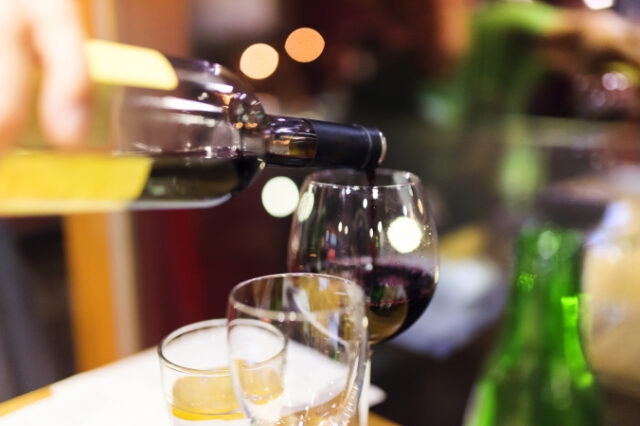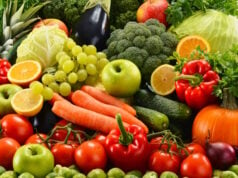

Recent discussion about the increasing quality of Virginia wines piqued our curiosity. The state leads the Mid-Atlantic region in the number of wineries — sixth behind Texas and New York yet not everyone has had the chance to taste these wines because they struggle to create a brand identity beyond their region.
It doesn’t help that wine growers here battle variable weather patterns with sometimes brutal winters, scorching summers and perhaps the biggest scourge of all stifling humidity. High humidity creates favorable conditions for the endemic mildews that constantly threaten the vines and can destroy an entire vintage in days.
We recently had the opportunity to taste three recent vintages from Early Mountain Winery, located among the rolling hills of central Virginia. Two grapes — petit manseng and cabernet franc — are increasingly recognized as important grape varieties in Virginia and were an important element in the wines we tasted. Both have the potential to become iconic representative grapes in Virginia’s future.
Petite manseng is an unlikely white grape to star among other more popular and well- known Virginia grapes, such as chardonnay and viognier. Primarily grown in the Jurancon region in southwest France, petit manseng is a minor player among other indigenous white grape varieties grown there. However, Virginia winemakers increasingly are recognizing petite manseng’s potential perhaps encouraged by a Horton Vineyards Governors Cup award in with their 2016 Horton Petit Manseng. Petit manseng is known for its thick skins which help the variety resist disease in Virginia’s high humidity environment.

The Early Mountain Five Forks Virginia 2020 ($26) is a delightful white blend made up primarily of 61 percent petit manseng and 32 percent sauvignon blanc and a dollop of chardonnay and pinot gris. The blend features a bright lemony nose with pear, apple and lemon notes in the mouth. Bright but balanced acidity make this wine a sure-fire winner with fish and poultry dishes.
The Early Mountain Chardonnay Quaker Run Vineyard Virginia 2019 ($42) is one of the better examples of this varietal that we have tasted from Virginia. Floral and tropical pineapple notes dominate with a lovely medium-body, smooth texture and finish.
Cabernet franc is the current darling of progressive Virginia winemakers, and the blend from Early Mountain seems to justify the interest. Early ripening adds a competitive edge in the relatively short Virginia growing season.
Starring primarily in the Loire region of France, cabernet franc makes up the reds of Chinon and Samur Champigny. Cabernet franc also plays a supporting role on the Left Bank and often partners with merlot on the Right Bank where it creates lush, fruity St Emilions and Pomerols.
The Early Mountain Foothills Virginia 2020 ($27) is a grab-bag of traditional Bordeaux varietals with cabernet franc leading at 43 percent. Merlot, cabernet sauvignon and petit Verdot follow in almost equal parts with a soupcon of petit manseng. This exuberant youthful red wine features a bright berry scented nose with an almost beaujolais-like experience with abundant cherry herb notes.
Marsala
Many consumers associate marsala with a chicken or veal entrée. Veal or chicken marsala, a standard on many Italian restaurant menus, describes a sauteed cutlet served with a rich, slightly sweet sauce made with marsala. While other wines, such as burgundy and sherry, are enjoyed equally on their own or added to sauces, marsala is rarely drunk as a beverage.
Marsala, a fortified wine produced near the town of Marsala on Sicily, is most often made from indigenous white grapes, such as grillo, inzolia and catarratto. It is vinified in three levels of sweetness: dry, semi-dry and sweet. Aging and the types of grapes used also create varying colors ranging from golden to dark amber, as well as an uncommon red version made from red grapes.
We recently were offered an opportunity to taste three marsalas specifically vinified for enjoying as a beverage, although they could also be used in many recipes.
Florio is a well-known and respected producer of well-priced ($10-12) marsala that is widely used in home kitchens and restaurants for enhancing classic entrees and zabaglione.
The Florio reserve marsalas were kissing cousins in style, color and flavor to the sherries of Spain and Madeira. We found the prices modest and competing favorably in price and quality to other European fortified wines.
The wines were impressive stand-alone cocktails or dessert beverage. They marry well with colder-temperature cuisine.

The dry Terre Arse Marsala DOC Riserva Vergine Secco ($20, 500ml) revealed a rich, very dry fino sherry character with notes of nuts and oranges, most appropriate for a pre-dinner cocktail or as an accompaniment to light, small plates such as nuts and cheese.
The Targa Marsala DOC Superiore Riserva Semisecco ($20) was softer in the mouth with notes of almonds, dried fruit and orange. A tad sweeter than the Terre Arse, it was also darker in color. Overall, we felt this marsala would accompany and enhance a wide variety of winter meat entrees, ranging from chicken and turkey to roasted beef as well as a wide variety of cheeses.
The Oltre Cento Marsala DOC Superiore Dolce ($20) is a dessert lover’s delight. It is noticeably sweet or similar to port in style. Dried fruits with an accent on dark and light raisins and a very smooth delivery make this the ideal accompaniment to desserts, including flans, crème caramel and fruit pies. It also is a great partner with rich cheeses such as stilton and gorgonzola.
Wine picks

Diora La Splendeur Du Soleil Chardonnay Monterey 2019 ($20). Winemaker James Ewart has ignored the more nuanced trend of restrained chardonnay and is unabashedly presenting a full throttle ode to hedonism in a wine bursting with tropical fruit notes, lusty toasty oak and 14.5 percent alcohol. So, if you are a fan of old style, in-your-face chardonnay, find this beauty and enjoy.
DuMol Pinot Noir Sonoma County Russian River Valley Wester Reach 2019 ($78). DuMol produces bold pinot noirs that also manage to maintain balance. Elements of ripe raspberry, cherry and a hint of root beer dominate this rich luxurious pinot noir.
Qupé Santa Barbara “Y” Block Chardonnay 2019 ($22). A very good deal in chardonnay, this expressive wine is barrel fermented and aged to give it a lot of texture. Blended with a bit of marsanne and viognier, it has good citrus and pear notes with a dash of mineral and spice.
Republished with permission
Tom Marquardt and Patrick Darr have been writing a weekly wine column for more than 30 years. Additional Wine reviews on MoreAboutWine
All photos are randomly selected and do not indicate any preferred wine. Listed prices are subject to change
You can send questions to Tom Marquardt mailto:marq1948@gmail.com
Always drink responsibly![/vc_message]












